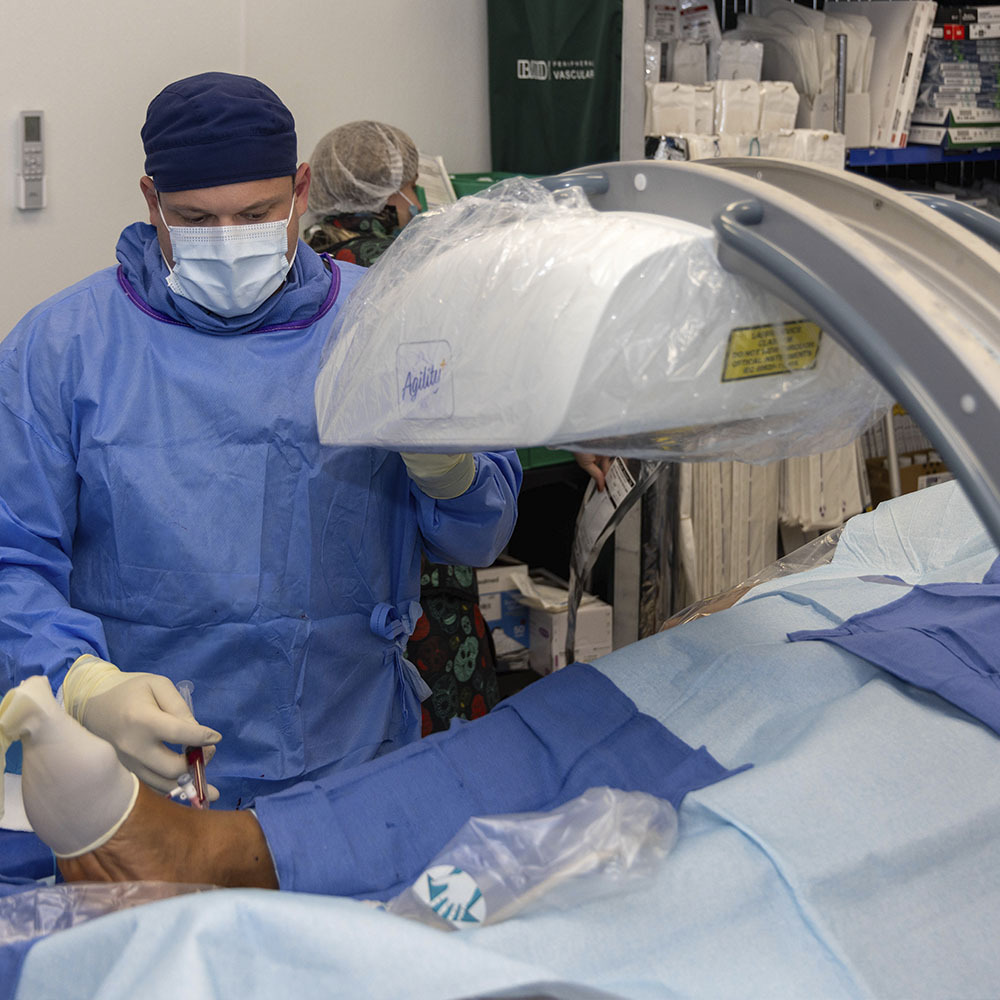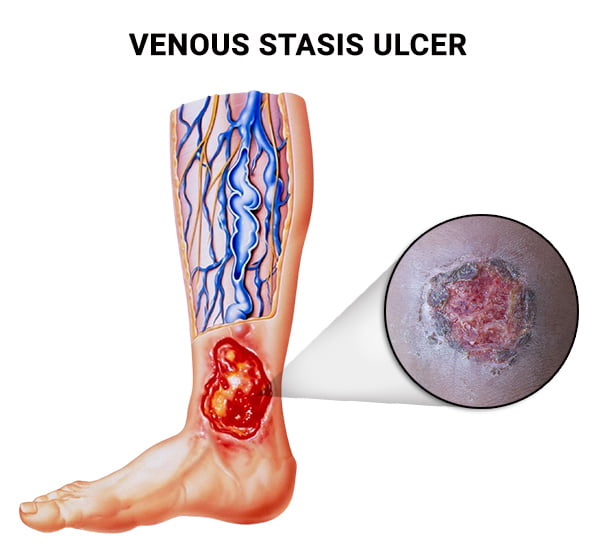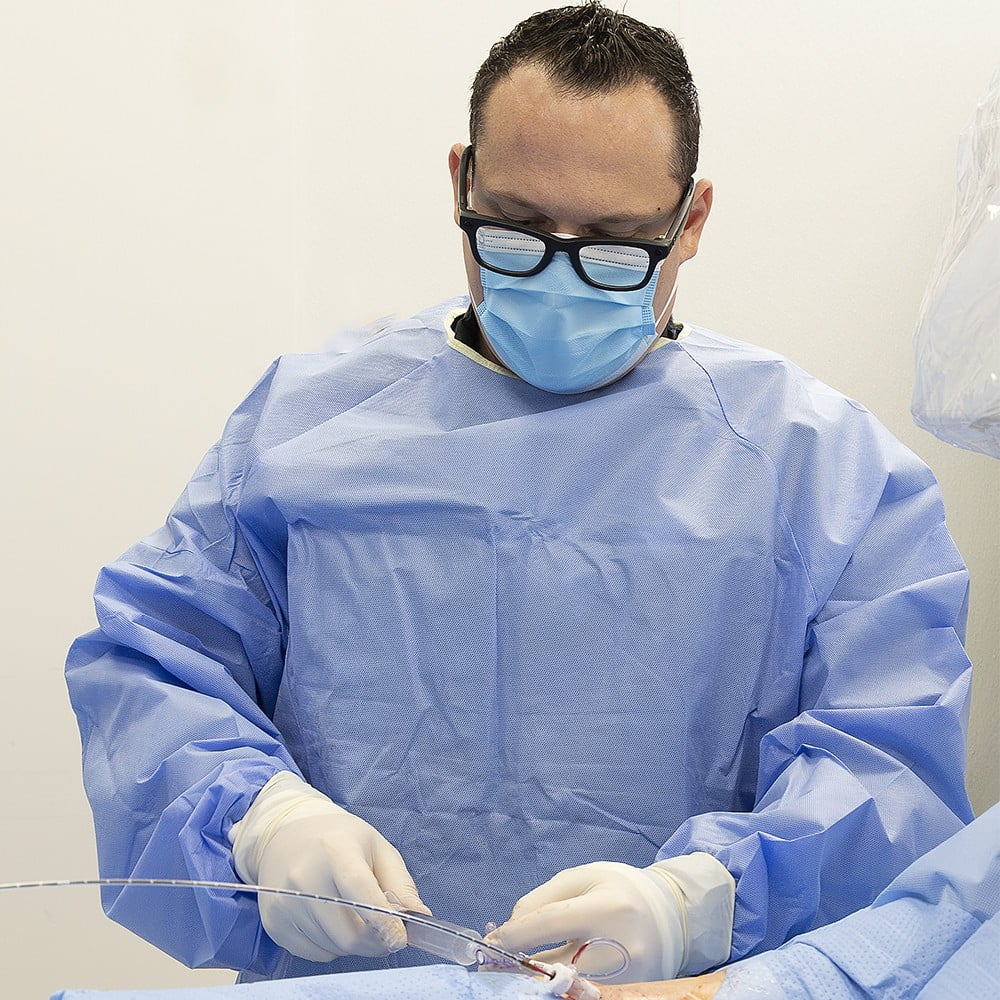
A venous stasis ulcer can be a nasty-looking open wound near your ankle. It’s not usually caused by an injury, but from a leaking vein within your foot or leg. If you don’t have it treated right away, it can become infected, so find the best vascular specialist in Brooklyn, NY and Bronx, NY. Dr. George Bolotin is a trained expert in vein diseases and conditions. His practice, the Astra Vein Treatment Center, offers venous ulcer treatments specific to your condition. Call today for an appointment.
A skin ulcer manifests as an open wound that heals slowly. The healing period for a venous ulcer can last anywhere from weeks to even years. Worse perhaps is that, if the underlying condition isn’t treated, the ulcer can become a recurring problem. Other known problems associated with a venous stasis ulcer include:
Open wounds or sores must be diagnosed and treated immediately to prevent infection and escalation. Because the cause is often a circulation problem, you need to see a vascular specialist rather than a dermatologist. The Astra Vein Treatment Center in Brooklyn, New York and Bronx, New York comes highly recommended. Dr. George Bolotin is a top Interventional Radiologist with years of experience treating vascular diseases and ulcers. He performs procedures that include:
 A venous stasis ulcer is usually the result of blood circulation problems in your legs. Like when the valves that control the flow of blood in the veins in your foot get damaged, your blood pools there, which leads to high pressure within the veins. The pressure causes fluid to leak out of the veins, resulting in the breakdown of surrounding tissues. The result may be an ulcer on the surface of your skin, even though the problem started in your vein.
A venous stasis ulcer is usually the result of blood circulation problems in your legs. Like when the valves that control the flow of blood in the veins in your foot get damaged, your blood pools there, which leads to high pressure within the veins. The pressure causes fluid to leak out of the veins, resulting in the breakdown of surrounding tissues. The result may be an ulcer on the surface of your skin, even though the problem started in your vein.
Your vein doctor in Brooklyn and Bronx needs to diagnose the reason for the ulcer before you can get the venous skin ulcer treatment. A physical exam often is followed by a medical history, a family history and perhaps some imaging tests. The causes that Dr. Bolotin investigates include:

 The first sign of trouble is when your skin turns dark red or purple because the blood is leaking out of a vein. If you don’t visit to your local vein specialist at the Astra Vein Treatment Center, your condition progresses into a venous ulcer. If you still don’t seek treatment, the wound can get infected, emitting a bad odor and draining pus.
The first sign of trouble is when your skin turns dark red or purple because the blood is leaking out of a vein. If you don’t visit to your local vein specialist at the Astra Vein Treatment Center, your condition progresses into a venous ulcer. If you still don’t seek treatment, the wound can get infected, emitting a bad odor and draining pus.
Don’t let the wound get that bad. Be on the lookout for these and other noticeable symptoms. They alert you that you require leg ulcer treatment. Other symptoms include:
Dr. Bolotin treats the skin ulcer, as well as its cause, but your treatment depends on the severity of your condition. If it’s bad enough, if you let it go for too long, you may be facing venous stasis ulcer treatment that requires anywhere from six to 12 months. Your vascular specialist may begin with the least invasive procedures if your wound isn’t severe. Effective forms of leg ulcer treatment include:
Since most foot ulcer treatment and leg ulcer treatment is relatively mild, there’s no reason to delay. Contact the Astra Vein Treatment Center today to schedule your initial consultation with Dr. George Bolotin, so he can diagnose and treat your leg wound.
Vein & Vascular Medical Care
4209 Ave U, Suite A.
Brooklyn, NY 11234
(347) 934-9068
Vein & Vascular Medical Care
869 E Tremont Ave
Bronx, NY 10460
(929) 447-4563